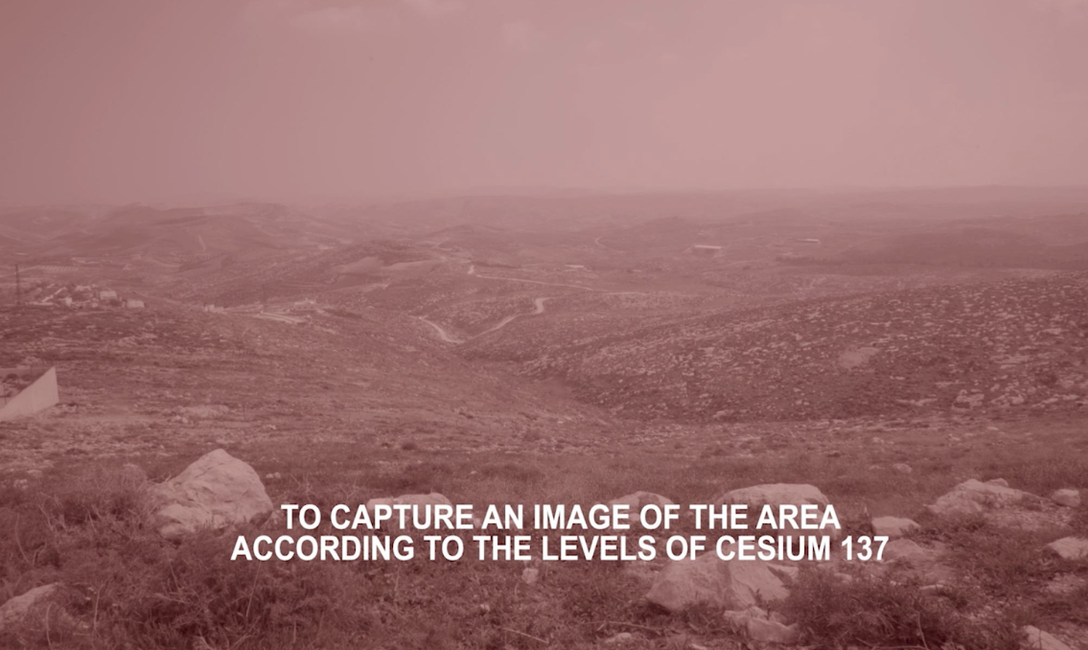past event
A River Dies of Thirst
Saturday 23 Mar 2024
11:00am

Inas Halabi, We Have Always Known the Wind’s Direction, 2019-2020, film still. Courtesy of the artist.
VIEW A RIVER DIES OF THIRST HERE
A River Dies of Thirst is an online screening programme that takes its name from the collection of poems, meditations, fragments, and journal entries by Palestinian poet Mahmoud Darwish, begun in the tumultuous summer of 2006, as Israel attacked Gaza and Lebanon, and published shortly before his death in 2008. Combining lyric, prose poem and aphorism, Darwish’s musings upon the unrest and loss he experiences dwell instead on love and humanity, and see the act of writing itself as an act of resistance.
As he declares elsewhere:
"I want to find a language that transforms language itself into steel for the spirit—a language to use against these sparkling silver insects, these jets. I want to sing. I want a language . . . that asks me to bear witness and that I can ask to bear witness, to what power there is in us to overcome this cosmic isolation."
The works in this selection take up Darwish's call for a language with which to bear witness to the forces of extractive colonialism, finding in the visual vocabulary of the fragment, the glimpse, or the partial frame an artistic mode by which myth and dream are rendered inseparable from truth. In doing so, they seek out invisible histories hidden in the landscape and the alternative forms of knowledge production found in the gaps of established narratives.
In We Have Always Known the Wind’s Direction (2019-20), Inas Halabi probes the possible burial of nuclear waste in the south of the West Bank in the occupied Palestinian territories. The legacy of forestry and milling in the Bay of Plenty town of Kawerau provides the setting for Hana Pera Aoake's I saw the mountain erupt (2023), an evocative take on the deep histories of local maunga, awa and tuna (eels). Oral testimony by women from the remote areas of Rakiura (Stewart Island) recalls their destructive separation from land and language, the unseen presence of which Sandy Wakefield makes visible in Nakunaku (2020). Joanna Margaret Paul's silent film Thorndon (1975) depicts her home near the Bolton Street Cemetery in Te Whanganui-a-Tara Wellington; the city is presented as a series of dissected spaces, as cranes dividing the sky construct the motorway that required the exhumation of around 3,700 burials. Lastly, Fiona Amundsen's A Body That Lives (2017) is a portrait of an elderly Japanese former prisoner of war, a participant in the 1944 Cowra breakout, that reflects upon the slipperiness of memory and the breakdown of objective evidence.
Taken together, the works in A River Dies of Thirst are connected by that autonomous, wilful body of water, the river—as cultural theorist Astrida Neimanis describes it, "ebbing, fluvial, dripping, coursing, traversing time and space." Further following Neimanis’ invocation that "we are all bodies of water," these works echo the radical decentering of the individual subject position in favour of collective liquidity that her project entails. As Neimanis explains:
"To think embodiment as watery belies the understanding of bodies that we have inherited from the dominant Western metaphysic tradition. As watery, we experience ourselves less as isolated entities, and more as oceanic eddies: I am a singular, dynamic whorl dissolving in a complex, fluid circulation. The space between ourselves and our others is at once as distant as the primeval sea, yet also closer than our own skin—the traces of those same oceanic beginnings still cycling through us, pausing as this bodily thing we call "mine." Water is between bodies, but of bodies, before us and beyond us, yet also very presently this body too. Deictics falter. Our comfortable categories of thought begin to erode. Water entangles our bodies in relations of gift, debt, theft, complicity, differentiation, relation."
To think of ourselves as bodies of water also entails the rejection of the dominance of systems that profit from the extraction of natural resources from the land. At the basis of contemporary extractivism is a violent logic of taking—without reciprocity, without stewardship, without care. To think as watery requires us to reflect upon our own entanglements and complicity in a world with ever more finite resources to go around. It is a call to resilience and resistance, and to upend the inexorable logic by which a river might die of thirst.
This programme is selected in response to Inas Halabi's exhibition The Centre Does Not Hold, on view from 23 March to 20 April 2024 at Enjoy Contemporary Art Space in Te Whanganui-a-Tara Wellington. Both are curated by Jess Clifford.
